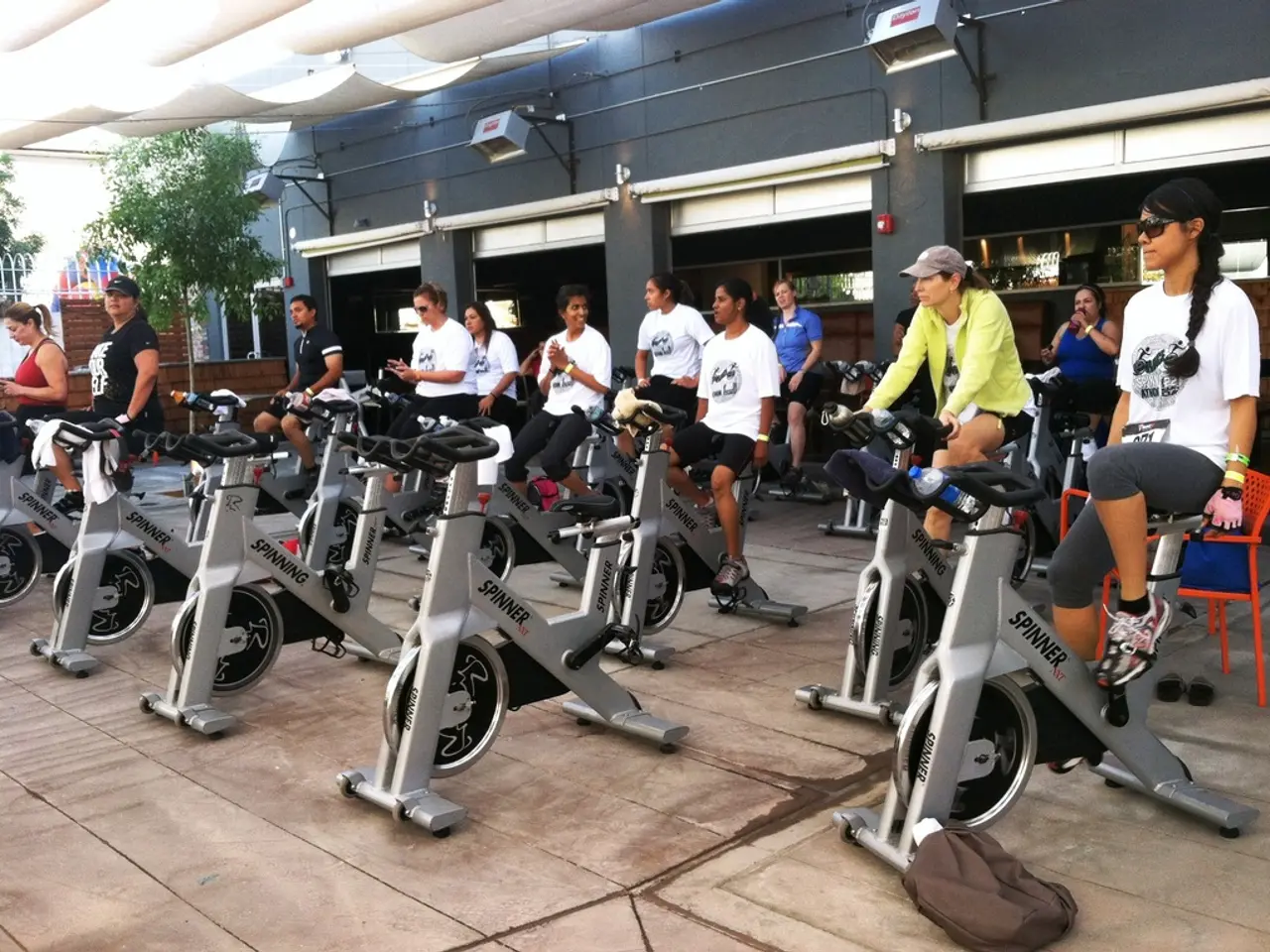Strategies for Reducing Hip Fat: A Combination of Exercise and Dietary Adjustments
In an effort to effectively reduce hip fat, a multifaceted approach combining diet, exercise, and lifestyle modifications is recommended. This strategy aligns with the Physical Activity Guidelines for Americans and takes into account factors such as stress and sleep quality.
For exercise, it is advisable to incorporate strength training targeting the hips and thighs, such as squats, lunges (regular and jumping lunges), side leg lifts, and burpees. These exercises engage the glutes, quadriceps, hamstrings, and calves, aiding in muscle toning and building around the hips. Cardiovascular exercise, like running, swimming, cycling, hiking, and jumping rope, should also be included to increase overall calorie burn and fat loss. High-intensity interval training (HIIT) can be paired with strength exercises to optimize fat loss while preserving muscle.
When it comes to diet, creating a calorie deficit is crucial for weight loss. A balanced diet rich in lean proteins, fruits, vegetables, whole grains, and healthy fats, with an emphasis on minimally processed, nutrient-dense foods, is recommended. Weekly food tracking can help maintain consistent energy intake and adherence to diet goals.
Managing stress and optimising sleep quality are also essential factors in fat distribution and metabolism. Chronic stress can increase cortisol, which is associated with fat accumulation, particularly around the abdomen and potentially hips. Good sleep hygiene, including avoiding late-night eating, limiting caffeine, exercising regularly but not too close to bedtime, and getting natural daylight exposure, improves weight management and metabolic health.
In summary, combining targeted strength exercises, such as squats and lunges, with cardio and possibly HIIT, following a balanced, calorie-controlled diet rich in whole foods, managing stress, and optimising sleep quality form the basis of an effective strategy for reducing hip fat. Maintaining consistency and following the Physical Activity Guidelines recommending at least 150 minutes of moderate aerobic activity plus strength training weekly is key to achieving sustainable results.
It is important to note that spot reduction does not occur; fat loss happens overall with consistent calorie deficit alongside exercise. Consulting a doctor before making any significant dietary changes is also advised.
Incorporating High-Intensity Interval Training (HIIT) into the exercise routine paired with strength exercises can optimize fat loss, aiding in hip fat reduction. A balanced, calorie-controlled diet rich in lean proteins, fruits, vegetables, whole grains, and healthy fats is crucial for weight loss and overall health-and-wellness. Managing stress and optimizing sleep quality are essential for fat distribution and metabolism, as chronic stress can lead to cortisol levels that promote fat accumulation and potential hip fat increase. Regular consulting with fitness professionals, nutritional experts, and doctors can provide guidance in fitness-and-exercise, nutrition, weight-management, and lifestyle modifications for effective weight loss and overall fitness.




